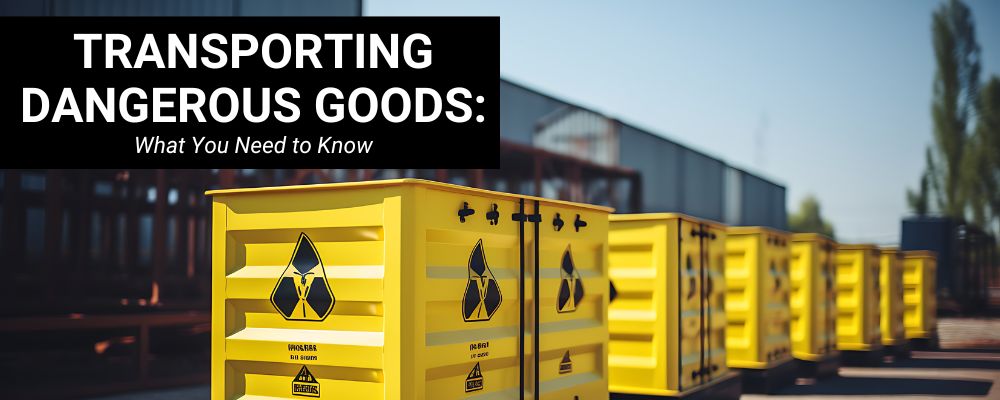
Introduction to Dangerous Goods
When it comes to transporting dangerous goods, you may wonder how these items are safely delivered. There are various types of dangerous goods, and some everyday items we use can fall under this category. In this article, we will explore what goods are considered dangerous for international transportation and how you can organize their transportation.
There are numerous products that are classified as dangerous when it comes to international shipments. These include car engines, batteries, motor oils, spices, dry ice, pressurized tanks, laptop lithium batteries, aerosol cans, paintings and more. In most cases, you might not think of these items as hazardous but they indeed pose risks during transportation. If you transport a dangerous good without proper handling procedures in place or without declaring it correctly on shipping documents and labels; it can create problems during cargo handling on airplanes and vessels resulting in fines even if no issues arise from the shipment itself.
If you’re unsure whether your shipment falls under the category of dangerous goods or not – consult with your freight forwarder beforehand. There are international rules governing the transport of dangerous goods called “The Transport of Dangerous Goods” (Orange Book) published by the United Nations (UN).
All hazardous materials have an assigned UN number ranging from 1 to 9 depending on their risk level.
Let’s take a look at each class:
Class 1 – Explosive materials.
Class 2 – Gases.
Class 3 – Flammable liquids.
Class 4 – Flammable solids.
Class 5 – Oxidizing substances and organic peroxides.
Class 6 – Toxic substances and infectious substances
Class 7- Radioactive materials
Class 8 – Corrosive substances
Class 9 – Miscellaneous
These classes apply specifically to internationally transported hazardous goods. Only specific categories within these classes can be transported by sea lines or airlines due to weight restrictions set by carriers themselves so it’s important to check beforehand if your dangerous goods will be accepted for shipping. There have been instances where one sea line refused a hazardous shipment, while another maritime company accepted the same cargo.
In general, airlines tend to have stricter regulations compared to ocean carriers.
You can determine whether or not your goods can be shipped by providing the UN number associated with them. Remember that the UN number identifies the product while its class determines its level of danger.
So, how do you identify the UN number and hazard class?
These details are typically found in a document called Safety Data Sheet (SDS). SDS is issued for all chemical products and provides information on product handling, leakage procedures, and hazards associated with it. This document is crucial for international transportation purposes as it contains 16 sections – some particularly essential ones include:
Section 9 – Physical and Chemical Properties
Section 10 – Stability and Reactivity
Section 14 – Transportation Information
Section 9 provides information about flashpoint temperature and ignition point of dangerous goods whereas Section 10 describes conditions to avoid regarding these substances as well as any potential hazardous reactions they may cause. Chemical products can have low flashpoints or even ignite at room temperatures which make this data vital for both airfreight and sea freight operations.
Finally, Section 14 includes information about the UN number we mentioned earlier along with hazard classification discussed above; this data enables you to verify whether or not your cargo can be loaded safely onto an aircraft or vessel. It also specifies required packaging type which needs careful consideration especially when arranging air shipments according to carrier requirements.
Customs clearance procedures for dangerous goods require special attention too!
When importing hazardous cargo into a country, free storage time at ports is limited so smooth customs clearance becomes crucial within tight deadlines; otherwise additional fees known as demurrage charges might apply resulting in extra costs for you! Preparing necessary documents ahead of time allows ample opportunity to review safety data sheets and prepare for customs clearance appropriately.
It’s important to note that specific rules may apply when transporting dangerous goods within a country, not just internationally.








